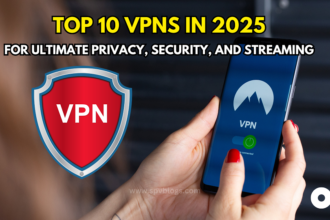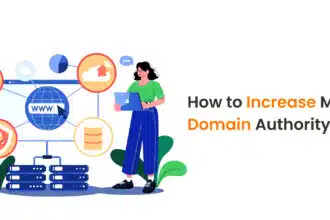Introduction to Gmail
Gmail is a widely-used email service, developed by Google, that has become an indispensable tool for both personal and professional communication. Since its launch in 2004, it has consistently evolved to meet the changing needs of its users, establishing itself as one of the most popular email platforms globally. One reason for its popularity is its user-friendly interface, which allows even beginners to navigate effortlessly. This accessibility is essential for users who may not be tech-savvy, as it simplifies the process of managing electronic correspondence.
Security is a significant concern for users in the digital realm, and Gmail boasts robust security measures to protect user information. With features such as two-factor authentication and built-in phishing detection, users can feel confident that their accounts are less susceptible to unauthorized access. This level of protection is increasingly important as reliance on digital communication continues to grow.
Another notable advantage of using Gmail is its seamless integration with other Google services, including Google Drive, Google Calendar, and Google Meet. This interconnectedness facilitates a more streamlined experience, allowing users to manage everything from emails to scheduling in one cohesive environment. The ability to share documents directly from Google Drive via email further enhances productivity and collaboration.
Moreover, Gmail’s effective spam filtering helps users maintain an organized inbox, ensuring that important messages are not overlooked amidst unsolicited emails. Users can easily manage their correspondence by categorizing emails and setting up filters. In today’s digital world, where communication is essential, understanding how to create a Gmail account has become a crucial skill. Being able to create a new email address with Gmail opens up various opportunities for personal, educational, and professional use.
Preparing to Create Your Gmail Account
Before embarking on the journey of how to create a Gmail account, it is essential to prepare adequately. Ensuring that you have the right tools and information can facilitate a smoother account creation process. Firstly, you will need a device with internet access, such as a computer, tablet, or smartphone, which allows you to navigate to the Gmail registration page seamlessly. This is a fundamental requirement and cannot be overlooked.
Next, consider the username you would like to choose for your new email address. Your username should ideally reflect your identity or the purpose of your email account, as it will be part of your email address. Google has specific guidelines regarding acceptable usernames that do not include spaces or special characters other than periods or underscores. It is advisable to come up with a few alternatives in case your first preference is already taken.
Additionally, you must think about the password for your Gmail account. A strong password is crucial in securing your account against potential unauthorized access. A good password typically contains a mix of uppercase and lowercase letters, numbers, and symbols, and is generally at least eight characters long. Ensure that you do not use easily guessable information like birthdays or common words.
Moreover, as part of the signup process, you will be required to agree to Google’s terms and conditions and privacy policy. Familiarizing yourself with these documents is a good practice, as it provides insight into how your data will be handled. It is advisable to read through them carefully before proceeding to ensure transparency regarding the services you will use. Taking these preliminary steps will prepare you adequately for creating a new email address, setting a solid foundation for your communications moving forward.
Step-by-Step Guide to Creating a Gmail Account
Creating a Gmail account is a straightforward process that enables users to access a range of Google services, including email, cloud storage, and productivity tools. To begin, navigate to the official Gmail website or download the Gmail app from your device’s app store. Once there, locate the option that states “Create account” and click on it to commence the registration process.
Next, you will be prompted to enter your personal information. This includes your first and last name, which will appear in the email you send. Subsequently, you must choose a unique email address that you would like to use. Consider selecting a name that reflects your identity or purpose of the email for better recognition. If your desired email address is already taken, Gmail will suggest alternatives, or you can modify it to create a new email address that is available.
Following this, you’ll need to create a strong password. A secure password typically comprises a combination of letters, numbers, and symbols, and should be at least eight characters long. Gmail will provide feedback to ensure your password meets its security criteria. After entering your password, confirm it by typing it again in the provided field.
To enhance security and retrieval of your account, Gmail will ask you to provide a mobile phone number and a recovery email address. This step is crucial, as it allows account verification and helps you regain access in case you forget your password. Gmail will send a verification code to your mobile device for validation purposes. Enter this code to complete the verification process.
After successfully verifying your phone number, you will be asked to fill in additional information, including your date of birth and gender. Once completed, read through the privacy and terms policies, and then click on “I agree” to create your Gmail account.
Upon account creation, you can now sign in using your email address and password. You are ready to explore your new email account and customize your settings, organizing it to suit your preferences for effective email communication.
Post-Creation Tips and Troubleshooting
Once you have successfully created your Gmail account, it is essential to take a few important steps to enhance your overall experience and ensure the security and organization of your email. Firstly, consider setting up account recovery options. This includes adding a recovery email address or phone number. This measure is crucial in case you forget your password or if there are any unusual activities on your account. Recovery methods provide an additional layer of security and ease the process of regaining access to your account.
Secondly, to maintain an organized inbox, leverage Gmail’s features such as labels and folders. Labels allow you to categorize emails in a way that is meaningful to you, which can reduce clutter. By using labels, you can easily locate important messages related to specific projects, events, or correspondences. Additionally, consider customizing your inbox layout by choosing between the default view or categories like Social, Promotions, and Updates. This customization helps prioritize the emails you want to see first.
Another aspect to explore is the settings menu, where you can adjust privacy and notification preferences to suit your needs. Setting up filters can automatically sort incoming messages based on criteria you set, allowing for a streamlined and efficient email management experience. Furthermore, be aware of common troubleshooting steps for potential issues that may arise. For example, if you encounter problems with password recovery or suspect unauthorized access, you can reset your password via the Google Account Security page.
Finally, do not hesitate to explore the additional features Gmail offers, such as Google Meet for video conferencing, Google Drive for file storage, and Google Calendar for scheduling. By taking full advantage of these complementary tools, you can maximize your Gmail account experience and improve productivity in your personal and professional communications.

















